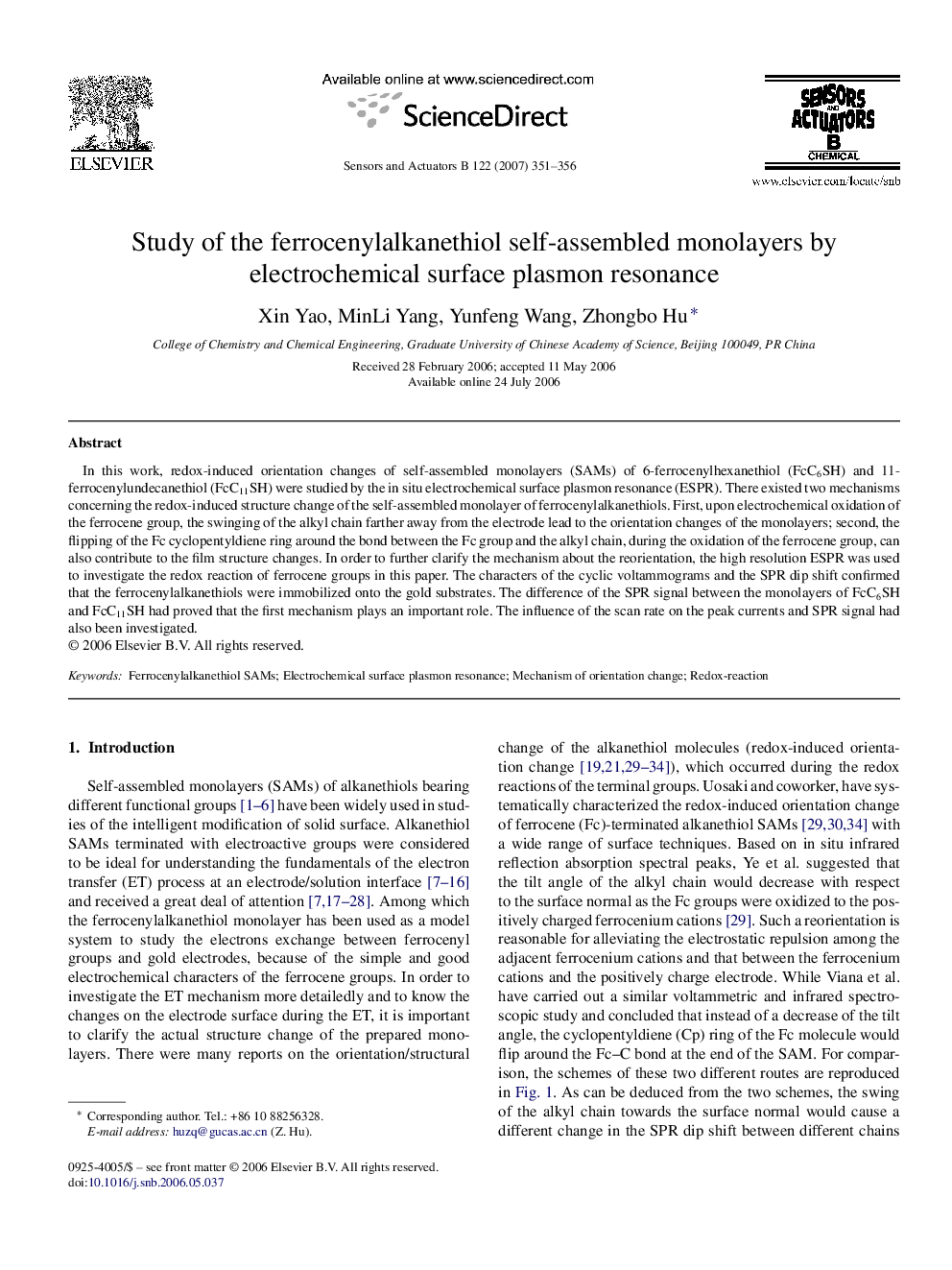| Article ID | Journal | Published Year | Pages | File Type |
|---|---|---|---|---|
| 746003 | Sensors and Actuators B: Chemical | 2007 | 6 Pages |
In this work, redox-induced orientation changes of self-assembled monolayers (SAMs) of 6-ferrocenylhexanethiol (FcC6SH) and 11-ferrocenylundecanethiol (FcC11SH) were studied by the in situ electrochemical surface plasmon resonance (ESPR). There existed two mechanisms concerning the redox-induced structure change of the self-assembled monolayer of ferrocenylalkanethiols. First, upon electrochemical oxidation of the ferrocene group, the swinging of the alkyl chain farther away from the electrode lead to the orientation changes of the monolayers; second, the flipping of the Fc cyclopentyldiene ring around the bond between the Fc group and the alkyl chain, during the oxidation of the ferrocene group, can also contribute to the film structure changes. In order to further clarify the mechanism about the reorientation, the high resolution ESPR was used to investigate the redox reaction of ferrocene groups in this paper. The characters of the cyclic voltammograms and the SPR dip shift confirmed that the ferrocenylalkanethiols were immobilized onto the gold substrates. The difference of the SPR signal between the monolayers of FcC6SH and FcC11SH had proved that the first mechanism plays an important role. The influence of the scan rate on the peak currents and SPR signal had also been investigated.
